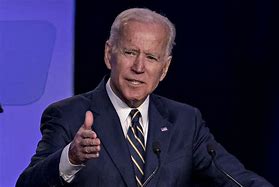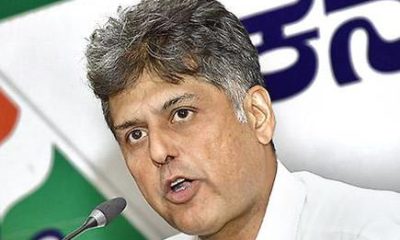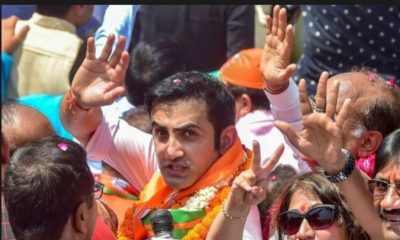Feature
Scale of AAP victory too much for friend and foe

The stunning victory of the Aam Aadmi Party (AAP) on February 10 in Delhi coincided with the global liberal order in disarray.
Far left Syriza had come to power in Greece. Southern Europe was likewise threatened. Gone was the Berlusconi tamasha in Italy. The Nordic North was taking to racism like duck to water. Britain and France, liberal citadels, were besieged and may fall. Western economies are in such disrepair that Chinese slowdown is, to the protagonists, heartening speculation.
The electorate in Delhi administered such a double fisted punch on the established order as to leave it dazed. Never in the history of free and fair elections had a party won more than 90 per cent of the seats – 67 seats in a house of 70. This in the metropolis of Delhi, the capital of India. That too, at a moment when India was being enlisted in the global grand design against the rise of China. This market of 1.25 billion must be insulated from turbulence. At such a moment, AAP has come riding a bolt from the blue. Ideas have legs and for this reason this idea, tried out in Delhi with brilliant success, had to be killed.
Prashant Bhushan, Yogendra Yadav and Anand Kumar are without doubt the finest men in AAP but they have not set the popular imagination on fire. Arvind Kejriwal has.
Nothing quite as magical has happened in Indian public life. As a communicator he has no parallel. I have not seen him strike one false note in the hundreds of interviews, and off-the-cuff comments in the course of a campaign which was a seamless media show.
Narendra Modi in his historic victory of May 2014 had come to power riding the world’s most expensive media campaign. He gained a thousand fold from the listlessness of the Congress. Modi harvested the unspeakable disgust with Sonia, Rahul and Manmohan Singh.
The timing of Kejriwal’s victory placed a huge question mark on Modi’s performance. AAP exposed the potential for early disenchantment with Modi.
AAP was not just a local aberration, it was a threat to patterns of crony capitalism. India Inc had bought up the media, lock, stock and barrel. Any journalist pitting himself as a conscientious objector to AAP should unburden himself of the grand delusion that he is driven by his inner voice. He is owned by interests who, in a manner of speaking, own Modi too.
That is why it is sad that Prashant Bhushan, Yogendra Yadav and now even Anand Kumar have allowed themselves to be used by that instrument of the establishment called the media. Photographs of these gents have adorned the front pages of the nation’s newspapers for the past month. These have been accompanied by news of rebellion within AAP.
The issues hinge on the personality of Kejriwal which appears to have bruised the egos of his think tank. How the party should structure itself? What position would Bhushan and Yadav have in it?
There has been an incipient tussle between Left inclined welfarism favoured by Kejriwal and Lohia socialism. Free thinking is in the DNA of Lohiaites, which is what Yogendra Yadav and Anand Kumar primarily are. It would always have been problematic to fit them into hierarchies as also to ignore their ideas.
What is astonishing is that instead of sorting out issues within the party forum, the dissidents have possibly unwittingly played into the hands of the establishment. Even if there were serious charges against Kejriwal, could the dissidents not have raised them in good time, once the AAP government had found its feet?
In this instance, too much success appears to have been the party’s bane. Remember when the Modi campaign was in full swing, important BJP leaders were whispering their own assessments of the electoral outcome. They were called the 160 club. The implication was that Modi with a small margin would need the club to form the government.
Likewise, a relatively modest victory for AAP would have been more to the liking of those who now find Kejriwal unmanageable in his exceptional success.
If possible, Kejriwal must walk the extra mile to retain old comrades. His other cadres are very raw and untrained. Alternatively he will have to dedicate himself unwaveringly to good governance which was his original theme song.
In Prashant Bhushan, the dissidents do have in their ranks, the high minded Brutus. What Kejriwal requires is a Mark Antony who will turn the argument around.
Entertainment
Meghalaya Reserves Legalized Gambling and Sports Betting for Tourists

The State Scores Extra High on Gaming-Friendly Industry Index
Meghalaya scored 92.85 out of 100 possible points in a Gaming Industry Index and proved to be India’s most gaming-friendly state following its recent profound legislation changes over the field allowing land-based and online gaming, including games of chance, under a licensing regime.
The index by the UK India Business Council (UKIBC) uses a scale of 0 to 100 to measure the level of legalisation on gambling and betting achieved by a state based on the scores over a set of seven different games – lottery, horse racing, betting on sports, poker, rummy, casino and fantasy sports
Starting from February last year, Meghalaya became the third state in India’s northeast to legalise gambling and betting after Sikkim and Nagaland. After consultations with the UKIBC, the state proceeded with the adoption of the Meghalaya Regulation of Gaming Act, 2021 and the nullification of the Meghalaya Prevention of Gambling Act, 1970. Subsequently in December, the Meghalaya Regulation of Gaming Rules, 2021 were notified and came into force.
All for the Tourists
The move to legalise and license various forms of offline and online betting and gambling in Meghalaya is aimed at boosting tourism and creating jobs, and altogether raising taxation revenues for the northeastern state. At the same time, the opportunities to bet and gamble legally will be reserved only for tourists and visitors.
“We came out with a Gaming Act and subsequently framed the Regulation of Gaming Rules, 2021. The government will accordingly issue licenses to operate games of skill and chance, both online and offline,” said James P. K. Sangma, Meghalaya State Law and Taxation Minister speaking in the capital city of Shillong. “But the legalized gambling and gaming will only be for tourists and not residents of Meghalaya,” he continued.
To be allowed to play, tourists and people visiting the state for work or business purposes will have to prove their non-resident status by presenting appropriate documents, in a process similar to a bank KYC (Know Your Customer) procedure.
Meghalaya Reaches Out to a Vast Market
With 140 millions of people in India estimated to bet regularly on sports, and a total of 370 million desi bettors around prominent sporting events, as per data from one of the latest reports by Esse N Videri, Meghalaya is set to reach out and take a piece of a vast market.
Estimates on the financial value of India’s sports betting market, combined across all types of offline channels and online sports and cricket predictions and betting platforms, speak about amounts between $130 and $150 billion (roughly between ₹9.7 and ₹11.5 lakh crore).
Andhra Pradesh, Telangana and Delhi are shown to deliver the highest number of bettors and Meghalaya can count on substantial tourists flow from their betting circles. The sports betting communities of Karnataka, Maharashtra, Uttar Pradesh and Haryana are also not to be underestimated.
Among the sports, cricket is most popular, registering 68 percent of the total bet count analyzed by Esse N Videri. Football takes second position with 11 percent of the bets, followed by betting on FIFA at 7 percent and on eCricket at 5 percent. The last position in the Top 5 of popular sports for betting in India is taken by tennis with 3 percent of the bet count.
Local Citizens will Still have Their Teer Betting
Meghalaya residents will still be permitted to participate in teer betting over arrow-shooting results. Teer is a traditional method of gambling, somewhat similar to a lottery draw, and held under the rules of the Meghalaya Regulation of the Game of Arrow Shooting and the Sale of Teer Tickets Act, 2018.
Teer includes bettors wagering on the number of arrows that reach the target which is placed about 50 meters away from a team of 20 archers positioned in a semicircle.
The archers shoot volleys of arrows at the target for ten minutes, and players place their bets choosing a number between 0 and 99 trying to guess the last two digits of the number of arrows that successfully pierce the target.
If, for example, the number of hits is 256, anyone who has bet on 56 wins an amount eight times bigger than their wager.























